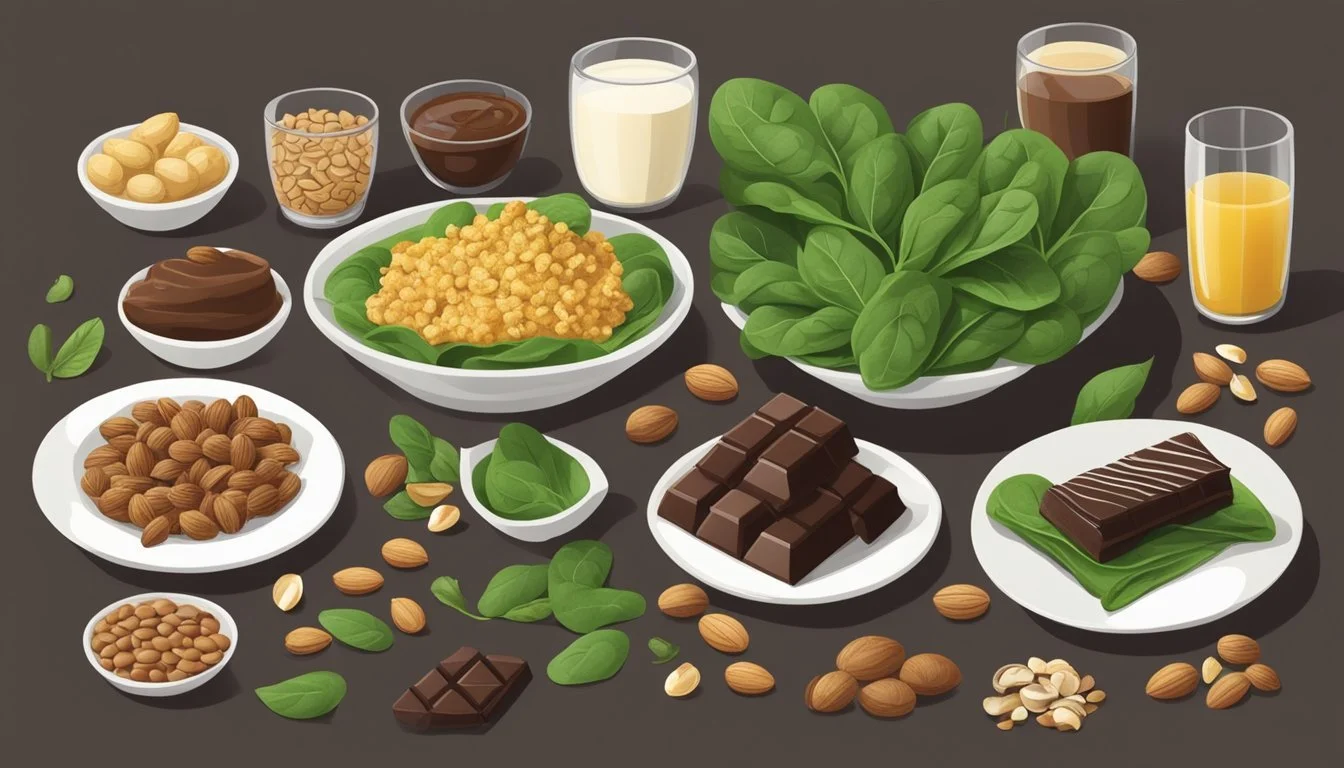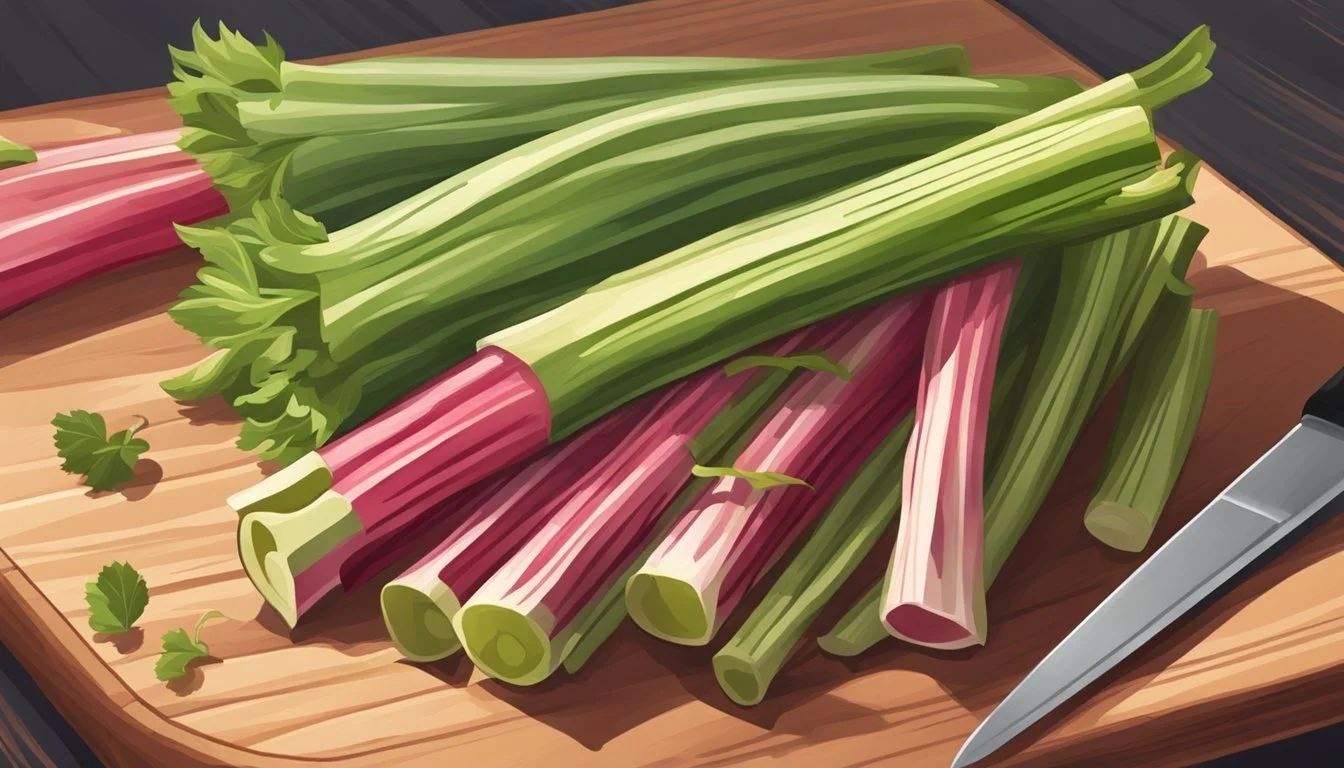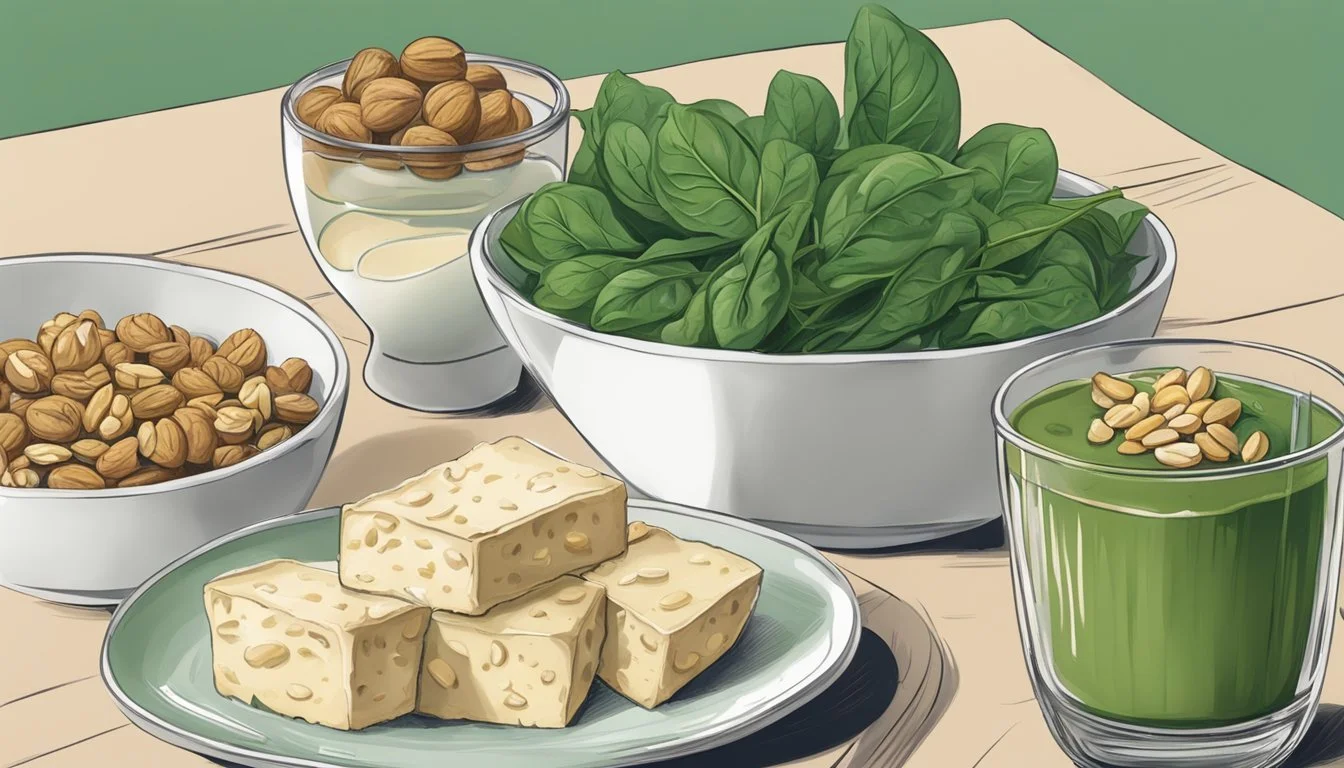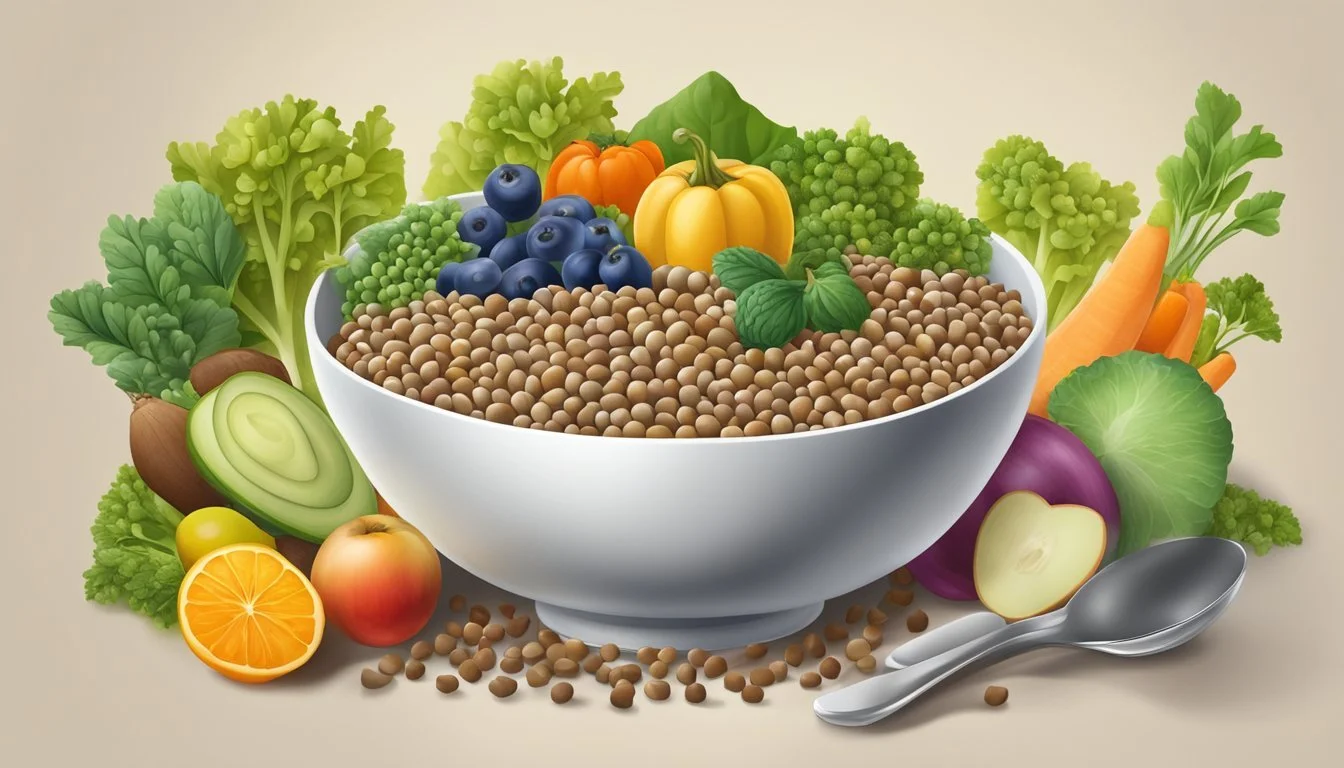10 High-Oxalate Foods to Limit for Kidney Health
What You Need to Know
Oxalates, also known as oxalic acid, are naturally occurring compounds found in many plant-based foods. These compounds are often present in leafy greens, nuts, seeds, and certain vegetables. While oxalates can contribute to a balanced diet for most individuals, they are known to pose a risk for kidney stone formation in sensitive individuals.
Understanding which foods are high in oxalates and how they impact your health is crucial for those prone to kidney stones. By being aware of the oxalate content in various foods, individuals can make informed dietary choices to potentially reduce the risk of kidney stone development.
1) Spinach
Spinach is well-known for its high oxalate content, making it a key food to consider for those managing oxalate intake.
Spinach contains a significant amount of oxalates, which can contribute to the formation of kidney stones. This green leafy vegetable is often highlighted due to its high oxalate levels compared to other greens.
In 100 grams of spinach, oxalates amount to approximately 750 milligrams. Due to this, individuals prone to kidney stones are often advised to limit their spinach consumption.
Cooking methods can influence oxalate levels. Boiling spinach can reduce its oxalate content, while steaming or consuming it raw does not have the same effect. This makes preparation methods an important factor.
Pairing spinach with calcium-rich foods can help reduce oxalate absorption. Foods like dairy or fortified products can bind with oxalates in the digestive tract, reducing the risk of stone formation.
2) Rhubarb
Rhubarb is one of the foods with a notably high oxalate content. For instance, raw rhubarb contains approximately 1,082 milligrams of oxalates per one-cup serving. When considering rhubarb for a diet, it is essential for individuals prone to kidney stones to be aware of these high levels.
In addition to its oxalate content, rhubarb is rich in fiber and vitamin K. It is often used in desserts and jams, which may mask the awareness of its oxalate levels. Limiting the intake of rhubarb can be beneficial for those needing to manage their oxalate consumption.
Rhubarb leaves should not be consumed as they contain toxic substances. Only the stalks are edible and commonly used in culinary practices. Even when cooked, rhubarb maintains a high oxalate concentration, which necessitates caution.
For those who enjoy rhubarb, it is advisable to balance it with foods low in oxalate. By doing so, the overall oxalate intake can be managed more effectively.
3) Beet Greens
Beet greens are an excellent vegetable, known for their nutritional benefits and high oxalate content.
A half-cup serving of cooked beet greens contains approximately 916 mg of oxalates. This makes them one of the most oxalate-rich vegetables available.
Despite their high oxalate levels, beet greens offer a range of other nutrients. They are rich in vitamins A, C, and K, as well as minerals such as iron and calcium.
For those concerned about oxalate intake, cooking beet greens can reduce oxalate levels, as boiling allows some oxalates to leach into the water.
Including beet greens in a diet should be done with caution, particularly for individuals with a history of kidney stones. Moderation is key to balancing their nutritional benefits with the potential risks associated with oxalates.
4) Swiss Chard
Swiss chard is a leafy green known for its vibrant, colorful stems and nutritional benefits. It is rich in vitamins A, C, and K, and provides essential minerals such as magnesium, potassium, and iron.
Swiss chard is also high in oxalates, which are natural compounds found in many plants. Oxalates can contribute to the formation of kidney stones if consumed in excessive amounts. In fact, Swiss chard contains around 350 mg of oxalate per cup when raw.
Cooking methods can impact the oxalate content in Swiss chard. Boiling can reduce oxalate levels by allowing a significant portion to leach into the cooking water. However, even after boiling, Swiss chard remains among the higher oxalate vegetables.
People prone to kidney stones are often advised to limit their intake of high-oxalate foods like Swiss chard. Adjusting cooking methods and combining Swiss chard with low-oxalate foods can help manage oxalate consumption. Always consult with a healthcare professional for personalized dietary advice.
5) Nuts like almonds
Nuts, especially almonds, are well-known for their high oxalate content. One ounce of almonds—approximately 22 nuts—contains around 122 milligrams of oxalates. This makes them a significant source of oxalates in the diet.
In addition to their oxalate content, almonds provide various nutritional benefits. They are rich in healthy fats, protein, fiber, and essential vitamins and minerals.
Despite their health benefits, those prone to kidney stones should monitor almond consumption. High oxalate intake can contribute to the formation of kidney stones, particularly in sensitive individuals.
Other nuts, such as cashews and hazelnuts, also contain oxalates, though typically in lower amounts than almonds. For individuals aiming to reduce oxalate intake, swapping almonds for lower-oxalate nuts, like pecans or macadamia nuts, can be a practical adjustment.
Incorporating a variety of nuts into the diet can offer nutritional benefits while managing oxalate levels. Making informed choices helps maintain balanced nutrition without increasing the risk of kidney stones.
6) Soy Products
Soy products are known for being nutrient-rich, but they also have high oxalate content. Firm tofu, for instance, contains about 235 milligrams of oxalates per 3-ounce serving. This makes it a significant source for those monitoring their oxalate intake.
Soy milk and yogurt are also notable for their oxalate levels. A cup of these can contain up to 336 milligrams of oxalates.
Those consuming soy-based foods regularly should be aware of their oxalate contributions. For individuals with concerns about kidney stones, this could be particularly relevant.
Incorporating soy products into the diet is still possible. Adjusting portion sizes and balancing with other low-oxalate foods can help manage oxalate intake effectively.
Soy products offer various health benefits, but their oxalate content should not be overlooked by those needing to limit oxalates.
7) Sweet potatoes
Sweet potatoes are nutritious but also high in oxalates. For each cup serving, they contain 28 milligrams of oxalates.
This level can contribute to the formation of kidney stones in susceptible individuals. It's beneficial to monitor intake if there's a history of kidney stones.
Pairing sweet potatoes with calcium-rich foods may help lessen the risk of stone formation. Consuming these in moderation can be a practical approach. This keeps their benefits while managing oxalate levels.
8) Dark Chocolate
Dark chocolate is a well-known high-oxalate food. It contains significant levels of oxalates, especially when compared to its milk chocolate counterpart. This is primarily due to its higher cocoa content.
The oxalate content in dark chocolate can contribute to potential health issues for individuals prone to kidney stones. Those managing their oxalate intake need to be aware of this.
Dark chocolate also contains beneficial compounds like cacao butter, flavonoids, and antioxidants. These can support brain health, improve blood flow, and reduce oxidative damage. Despite these benefits, it should be consumed in moderation.
People who enjoy dark chocolate can still include it in a balanced diet. Monitoring portions and frequency is key to managing oxalate intake while still enjoying its rich flavor and benefits.
9) Okra
Okra is a unique vegetable known for its slimy texture and versatility in cooking. It has a distinct pod shape and is often used in gumbo and other Southern dishes.
Okra contains approximately 56.3 mg of soluble oxalate per 100 grams. This makes it relatively high in oxalates compared to other vegetables.
People prone to developing calcium oxalate kidney stones may need to moderate their okra intake. Despite its high oxalate content, okra is a nutritious vegetable. It offers dietary fiber, vitamins, and minerals, which are beneficial for general health.
When preparing okra, boiling or sautéing can be methods to incorporate it into dishes while balancing its oxalate concerns. Some balance can be achieved by pairing it with low-oxalate foods.
Though it is high in oxalates, individuals without concerns about kidney stones can still enjoy okra as part of a balanced diet. Its health benefits and unique flavor profile make it a valuable inclusion in various cuisines.
10) Buckwheat
Buckwheat, a popular grain alternative, is known for its health benefits including being a good source of fiber and protein. This pseudocereal is often used in gluten-free diets due to its lack of gluten.
For individuals monitoring oxalate intake, buckwheat is noteworthy. A ½ cup serving of cooked buckwheat groats contains approximately 67 milligrams of oxalates.
This level categorizes buckwheat as a high-oxalate food. This could be a concern for those prone to kidney stones. Alternatives should be considered if limiting oxalates is necessary.
Despite its oxalate content, buckwheat remains a nutritious option rich in vitamins and minerals. It’s essential to balance the benefits and potential risks when including buckwheat in a diet.
Understanding Oxalates
Oxalates, or oxalic acid, are naturally occurring substances found in many foods. These compounds can have significant effects on the body, particularly in relation to kidney health.
What Are Oxalates?
Oxalates are organic compounds that occur naturally in various foods, including vegetables, fruits, nuts, and grains. Chemically, they are composed of carbon, hydrogen, and oxygen atoms structured as oxalic acid. When consumed, oxalates can bind to minerals to form compounds such as calcium oxalate, which is insoluble in water.
Certain foods are known to have high concentrations of oxalates. For instance, spinach, beets, and nuts like almonds contain significant levels. People with specific health conditions may need to monitor and manage their dietary oxalate intake to mitigate potential health risks.
How Oxalates Affect the Body
In the human body, oxalates can bind to minerals like calcium, which may lead to the formation of kidney stones. Kidney stones composed of calcium oxalate are particularly common and can cause significant pain and discomfort.
Additionally, high oxalate intake has been linked to urinary oxalate excretion, increasing the likelihood of stone formation. While most individuals can tolerate moderate oxalate levels, those prone to kidney stones might need to follow a low-oxalate diet. This involves limiting high-oxalate foods and consuming calcium-rich foods to help reduce oxalate absorption.
Managing oxalate intake can involve dietary adjustments, such as soaking or boiling certain foods. This can help reduce oxalate levels and promote better health outcomes.
Health Implications of High Oxalate Foods
Consumption of high oxalate foods can have several health impacts, particularly related to kidney stones and other potential health risks.
Oxalates and Kidney Stones
High oxalate intake is closely linked with the formation of kidney stones. When oxalate combines with calcium in the kidneys, it can form calcium oxalate stones.
This is the most common type of kidney stone. Foods such as spinach, almonds, and potatoes are known to have high oxalate content, elevating the risk for those prone to stone formation.
Prevention Tips:
Increase fluid intake to help flush oxalates from the system
Pair high-oxalate foods with calcium-rich foods to reduce oxalate absorption
Avoid excessive intake of high-oxalate foods if you're susceptible to kidney stones
Other Health Risks
Beyond kidney stones, high oxalate consumption can pose other health challenges. Some individuals may experience hyperoxaluria, a condition where excess oxalates accumulate in the body, increasing the risk for renal issues.
In some sensitive individuals, foods high in oxalates can cause gut irritation and disrupt the gut microbiome. High oxalate levels may also exacerbate issues in people with certain metabolic disorders.
Alleviation Strategies:
Choose low-oxalate alternatives where feasible (e.g., swapping navy beans with red kidney beans)
Ensure adequate intake of vitamin B6, calcium, and magnesium
Limit high-oxalate beverages like black tea and instant coffee
Ensuring a balanced diet while keeping oxalate intake in check can help mitigate these risks.







